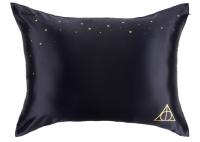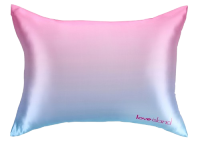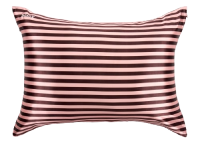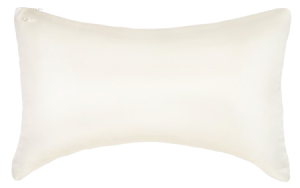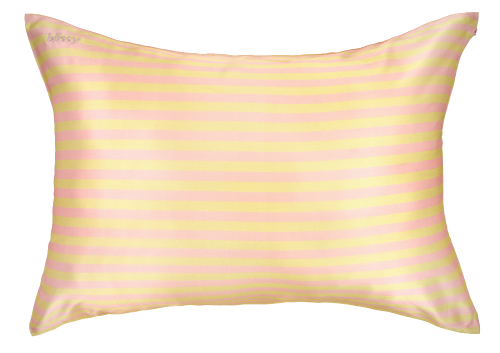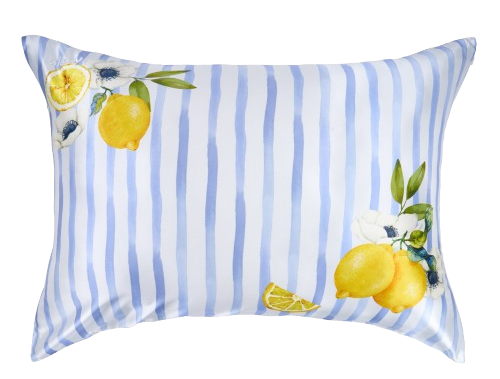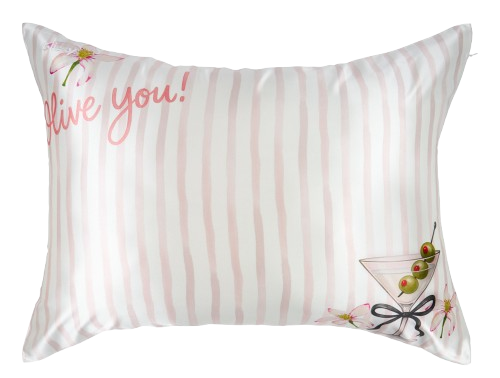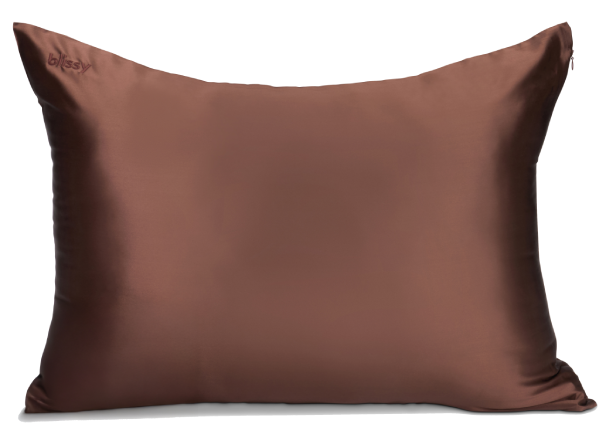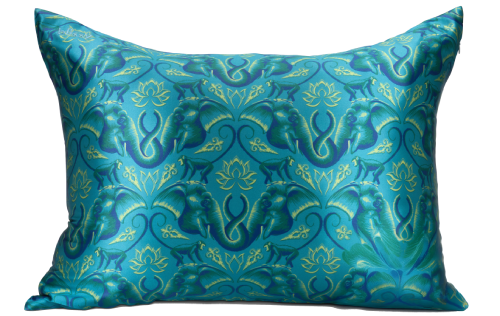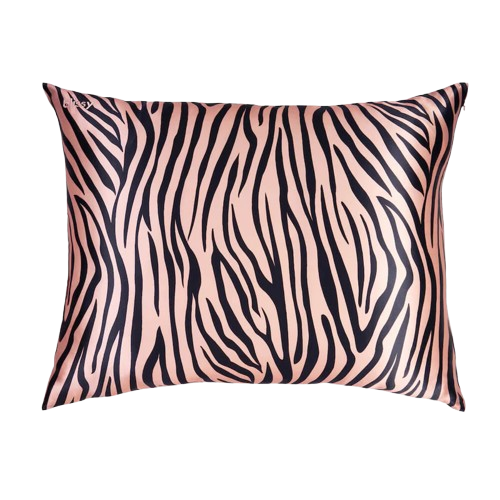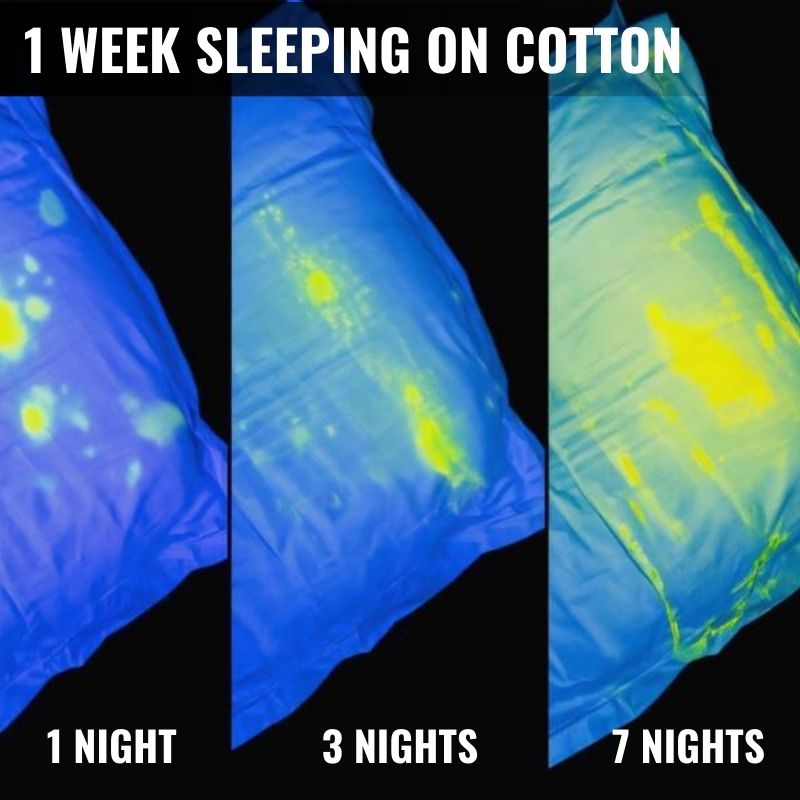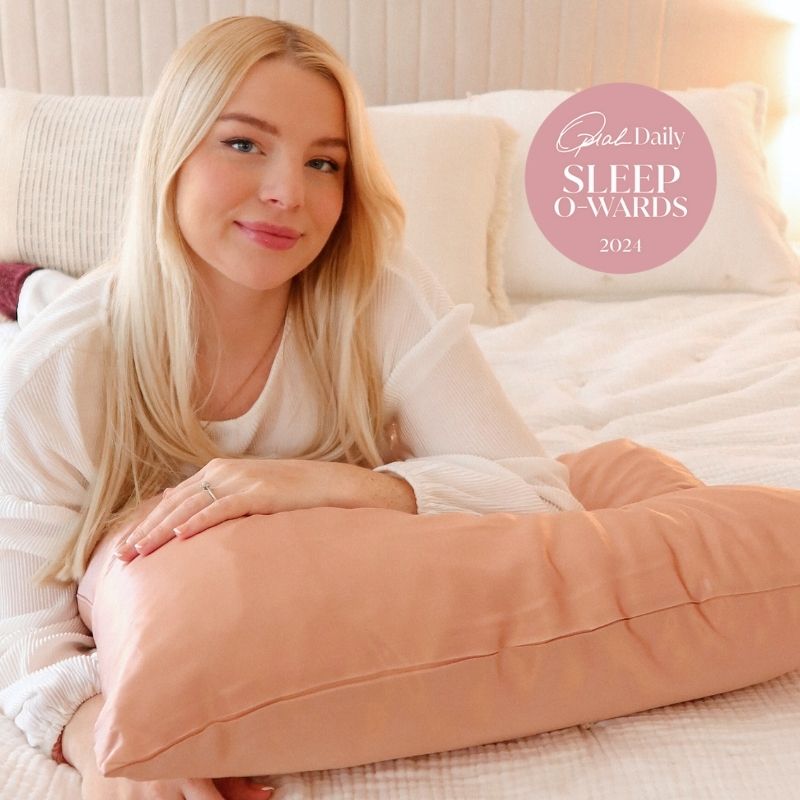Key Takeaways:
-
Linen is more breathable and moisture-wicking than cotton—great for hot sleepers.
-
Cotton is softer and cheaper, but holds more heat and moisture.
-
Linen is hypoallergenic and durable, offering better cooling and comfort.
-
For top-tier cooling and skin benefits, mulberry silk beats both.
When it comes to having the right pillowcases for sleeping, you want to make sure the fabric is breathable and will keep your skin cool at night. The ultimate goal is to sleep comfortably in any climate, any time of year.
Linen and cotton fabrics have some of the same qualities and are both popular for pillowcases. They also have different properties that make them suitable for different purposes. They can both make you feel fresh while sleeping.
What are the Differences Between Linen vs Cotton?

Most people know linen clothing for its coolness. Linen comes from the flax plant. It is a natural fiber that is lightweight and strong. Linen fabrics stay cool because they are more breathable and absorbent than cotton.
To make linen, flax fibers are woven together in a thick weave pattern. These fibers take a long time to soften once woven, unlike cotton which is already soft to begin with.
This softening process is one of the reasons why linen is so much more expensive than cotton. It’s also a much more durable fabric than cotton due to the thick weave.
Just as linen clothing is known for keeping the body comfortable and cool, linen fibers do the same during sleep. Linen fibers are hypoallergenic, and most people find linen to be a more durable fabric, woven tightly to maintain its shape. It's also eco-friendly, making it a more sustainable choice.
Comparing Linen vs Cotton: Key Differences
| Feature | Linen | Cotton |
|---|---|---|
| Source | Flax plant fibers | Cotton plant fibers |
| Initial Feel | Rough, softens over time | Naturally soft from start |
| Breathability | Highly breathable and cool | Moderately breathable |
| Moisture Absorption | Superior moisture wicking | Good absorbency |
| Durability | More durable, thick weave | Less durable than linen |
| Hypoallergenic | Naturally hypoallergenic | Good for most skin types |
| Eco-Friendliness | Highly sustainable choice | Varies by production method |
| Price Point | More expensive | Generally more affordable |
| Maintenance | Requires gentle care | Easier to care for |
Linen vs Cotton for Night Sweats: Which Keeps You Cooler?
If you're a hot sleeper who regularly wakes up damp with sweat, your fabric choice can make or break your sleep quality. Linen consistently outperforms cotton when it comes to keeping night sweats at bay, thanks to its superior moisture-wicking properties and breathable weave structure.
How Linen Handles Night Sweats
Linen's loose weave pattern creates natural air pockets that allow heat to escape quickly from your body. The cellulose fibers in linen can wick moisture away from your skin up to 20% faster than cotton, meaning you'll spend less time lying in damp, uncomfortable bedding. This breathable fabric also dries rapidly once moisture is absorbed, preventing that clammy feeling that can disrupt sleep.
Hot sleepers often report: Waking up noticeably drier and more comfortable on linen sheets, especially during humid summer months or in warm climates.
Why Cotton Falls Short for Temperature Control
While cotton is naturally breathable, it's significantly less effective at moisture management than linen. Egyptian cotton and other high-thread-count cotton varieties can actually trap heat and moisture against your body, creating a warm microclimate that triggers more sweating. Cotton also takes longer to dry once it absorbs sweat, leaving you lying on damp fabric that can cool you uncomfortably as the night progresses.
The Science Behind Cooling Fabrics
Research shows that fabric breathability is measured by air permeability—how easily air flows through the material. Linen scores significantly higher than cotton in these tests, with some studies showing linen allows up to 40% more airflow. This enhanced ventilation helps regulate your body temperature naturally, reducing the likelihood of night sweats in the first place.
Making the Right Choice for Hot Sleepers
For chronic night sweats, linen linens are the clear winner over cotton. However, both fabrics require proper care to maintain their cooling properties—wash them in cool water and avoid fabric softeners that can reduce breathability.
Even better option: Consider mulberry silk like Blissy Pillowcases, which naturally regulates temperature better than both linen and cotton. Silk adapts to your body heat, keeping you cool when you're warm and maintaining comfort throughout the night without the rougher texture that some find with linen.
Understanding Cotton vs Linen

Affordability
Cotton is a natural fabric that comes from the cotton plant. It is easier to manufacture than linen. As such, cotton is usually the more affordable choice for bedding. Linen is also a natural fabric, but since it is more difficult to manufacture, it is often more expensive.
Softness
What makes cotton so popular? Cotton is softer to the touch and has more flexibility and stretch than linen, which can feel rough even after being stored for a long time.
Linen sheets may feel softer after multiple washes over time. Cotton starts off as soft (and softness increases with thread count). Both fabrics are far rougher than silk, which is the softest fabric available.
Wrinkling
Both cotton and linen fabrics are prone to wrinkling. Especially linen, which tends to have more wrinkles overall because of the stiffness of the fabric.
Durability
Linen, made from the fibers of the flax plant, is known for its durability. The flax plant produces sturdy fibers which can be used to create bedding that lasts for decades. While linen is durable, silk is generally stronger. It is a more elastic and flexible fabric with a higher tensile strength.

Luxuriousness
When it comes to luxury, many people prefer linen. If you prefer cotton, Egyptian cotton is the most luxurious type of cotton known for its high thread count. It is spun to perfection and is a quality choice for bedding. But if luxuriousness is what you're after, there is no fabric more luxurious than mulberry silk.
Cooling
Linen is a more breathable and lightweight fabric, making it a good choice for warmer environments. Its natural fibers help to wick away moisture and allow air to circulate, helping to keep the body cool and comfortable.
Cotton, on the other hand, is better at keeping you warm, making it a good choice for cooler temperatures.
If you want a fabric that can regulate your body temperature, silk is the best choice. It is able to adapt to your body's temperature, keeping you cool in hot weather and warm in cold weather.
Hypoallergenic and moisture-wicking
Linen is more moisture-wicking than cotton, making it dry quickly, while cotton is more absorbent. Some cotton weave patterns are less breathable and may invite water in due to the thickness of the materials. Linen is also hypoallergenic like silk while cotton is not.
Linen vs Cotton: What Are the Benefits?

Both linen and cotton offer distinct advantages, but they excel in different areas. Your choice depends on your skin sensitivity, climate preferences, and style tolerance.
Linen's Key Benefits
Linen sheets are naturally more breathable and hypoallergenic than cotton, making them ideal for sensitive skin. The loose weave and lower thread count allow better airflow, keeping you cool and moisture-free throughout the night.
Why choose linen:
-
Superior moisture wicking properties
-
Naturally hypoallergenic
-
Keeps you cool in warm climates
-
Gets softer with each wash
Cotton's Key Advantages
Cotton fibers have long been the go-to choice for bedding due to their versatility and year-round comfort. While cotton does wrinkle, it wrinkles significantly less than linen, making it easier to maintain a crisp appearance. It's also not considered hypoallergenic, so it's not the best choice for allergy sufferers or those with sensitive skin.
Why choose cotton:
-
Less prone to wrinkles than linen
-
Adaptable to any season
-
Wide variety of weaves and thread counts
-
More affordable options available
Making Your Final Choice
When deciding between linen vs cotton, consider three key factors: your climate, skin sensitivities, and aesthetic preferences. Linen excels in hot climates and offers superior breathable comfort, while cotton provides versatile, year-round performance with easier maintenance.
Both natural fibers offer excellent absorbency and durability when properly cared for.
Cotton vs Linen: How Do They Compare in the Wash?
Care requirements vary significantly between cotton and linen, with each natural fiber demanding specific washing techniques. Understanding proper care helps extend the life of your bedding and maintain its texture.
Linen Care Requirements
Linen bedding should be washed weekly with mild detergent and cold water. Think of linen like your favorite linen garment — it actually gets softer and more breathable with each wash. Always dry on low heat or air dry to prevent damage.
Key linen care tips:
-
Wash weekly with gentle detergent
-
Avoid fabric softeners (they reduce absorbency)
-
Low heat drying or hang to dry
-
Expect natural wrinkles — it's part of linen's charm
Cotton Care Requirements
Cotton fibers require careful washing to prevent shrinkage and maintain their cool, moisture-wicking properties. Cotton sheets should be washed separately from other materials to avoid damage.
Essential cotton care steps:
-
Wash weekly (or every two weeks minimum)
-
Use mild detergent with cold water
-
Always follow care label instructions
-
Low heat drying or air dry recommended
Which Is Easier to Care For?
Cotton wins for ease of care — it's more forgiving if you accidentally use hot water or higher heat. Linen requires more attention to maintain its super soft texture and breathable qualities, but the extra care pays off in comfort and durability.
Both natural fibers will reward proper care with years of comfortable sleep, but cotton offers more flexibility for busy lifestyles.
Cotton vs Linen: How Do They Compare in the Wash?
Care requirements vary significantly between cotton and linen, with each natural fiber demanding specific washing techniques. Understanding proper care helps extend the life of your bedding and maintain its texture.
Linen Care Requirements
Linen bedding should be washed weekly with mild detergent and cold water. Think of linen like your favorite linen garment — it actually gets softer and more breathable with each wash. Always dry on low heat or air dry to prevent damage.
Key linen care tips:
- Wash weekly with gentle detergent
- Avoid fabric softeners (they reduce absorbency)
- Low heat drying or hang to dry
- Expect natural wrinkles — it's part of linen's charm
Cotton Care Requirements
Cotton fibers require careful washing to prevent shrinkage and maintain their cool, moisture-wicking properties. Cotton sheets should be washed separately from other materials to avoid damage.
Essential cotton care steps:
- Wash weekly (or every two weeks minimum)
- Use mild detergent with cold water
- Always follow care label instructions
- Low heat drying or air dry recommended
Which Is Easier to Care For?
Cotton wins for ease of care — it's more forgiving if you accidentally use hot water or higher heat. Linen requires more attention to maintain its super soft texture and breathable qualities, but the extra care pays off in comfort and durability.
Both natural fibers will reward proper care with years of comfortable sleep, but cotton offers more flexibility for busy lifestyles.
Cotton vs Linen: What Are the Different Types for Sheets?
Within the categories of "cotton sheets" and "linen sheets", there are various different types of each.

Common types of linen sheets are:
- Flax linen: These linen fabric sheets are very strong and have woven flax fibers that keep them at the top of the list.
- Irish linen: These types of linen sheets are a popular fabric selection all over the world. They are very comfortable and a rich feel that appeals to many.
- Linen blends: Linen blends are two fabrics—a linen weave combined with another fabric that may make the sheets feel a little more comfortable and not as rough on the skin.
There are three popular types of cotton sheets:
- Standard or regular cotton: These sheets are the most common. The cotton they're made with is easy to grow and can withstand different types of weather. This cotton is used for sheets, pillowcases, cotton textiles, clothing, and more.
- Pima cotton: This cotton is considered to be one of the best in the world. This can be compared to the quality and durability of Egyptian cotton.
- Egyptian cotton: The thread count for Egyptian cotton is 400 at a minimum. These sheets are known to be ultra-soft and the most luxurious as far as cotton goes. Egyptian cotton is the strongest of any cotton fabric.
Linen vs Cotton Pillowcases
Linen fabric and cotton both offer unique benefits, but they differ significantly in style, cost, and durability. Understanding these differences can help you choose the right material for your sleep needs and budget.

Style and Color Options
Linen fabric sheets and pillowcases have limited patterns, colors, and styles, whereas cotton has an endless range of patterns, styles, and colors available. Cotton sheets are also more widely available and easier to find than linen bedding.
Price Comparison: Linen vs Cotton
Linen sheets are a luxurious and long-lasting choice, but they can be more expensive than cotton sheets. Cotton sheets are generally more affordable than linen sheets and are a good option for those on a budget. However, high-quality cotton sheets, such as those made from Egyptian cotton, can be more expensive.
Durability and Longevity
If you are willing to invest in a higher-quality product, linen sheets may be a good option for you. They can last for a very long time, so you won't need to replace them as often as you would with cheaper sheets. Cotton sheets may not last as long as linen sheets due to their tendency to shrink and become damaged more easily, as they do not have a tight weave pattern like linen.
Which Material Is Right for You?
However, if you are working with a tight budget, cotton sheets may be a more affordable option for you. If you are looking for premium sheets, cotton can be a good choice due to the wide range of options available.
Recap of Linen vs Cotton Bedding

The pros of linen sheets and pillowcases:
- Durable: Flax fiber is strong and when wet gets even stronger. This prevents linen sheets from weakening after each wash cycle.
- Moisture-wicking: Linen sheets are very light and absorb their weight when wet. They also dry much faster than cotton. Linen is also highly breathable and is great for warmer climates.
- Eco-friendly: Since linen fabric is created with durable natural fibers, it is biodegradable and will last for decades.
- Hypoallergenic: Linen sheets do not irritate and are good for people with sensitive skin.
The pros of cotton sheets and pillowcases
- Durable: Cotton can endure multiple washes and retain colors over time.
- Soft: Cotton is relatively soft from the moment it comes out of the package. It does not require many washes to become soft.
- Versatile: Cotton sheets are versatile and can accommodate many different types of sheet styles, patterns, and fabrics.
- Breathability: Cotton is breathable and works well in the summer. It can adapt to any temperature.
Cotton and linen cons
The cons of cotton pillowcases and sheets are that cotton fibers are not moisture-wicking. Cotton takes more time to dry, whereas linen dries quickly.
Both linen and cotton can wrinkle quite easily. Linen tends to hold wrinkles for longer periods of time. Cotton shrinks after washing so it is advised to buy a larger size than the mattress, anticipating the shrinkage.
So Which Should You Buy?
Both linen and cotton are natural fabrics and good choices for sheets—it all depends on your needs and preferences. If you are someone who wants the look and feel of luxurious and durable sheets, linen would probably be a better choice. They offer a crisp, clean, appearance but are limited in color choice and styles. They also work better in warmer climates.
Cotton can also provide the appearance of luxury, but that will require purchasing high-end Egyptian cotton to get the look and feel you desire. If budget is a concern, regular cotton is more affordable.
Also Consider Silk
If you want the best of both worlds in every category, the best fabric to buy is actually silk. Silk sheets can be prohibitively expensive for some, but the benefits of sleeping on silk are the greatest around your head and face. For this reason, you may want to consider investing in silk pillowcases (like Blissy), which are much more affordable than an entire sheet set.
Silk offers the same benefits as linen, but it is many times softer, more beautiful, and has benefits for your skin, hair, and sleep quality. Click the following links to read how silk compares with linen, cotton, satin, and bamboo.



